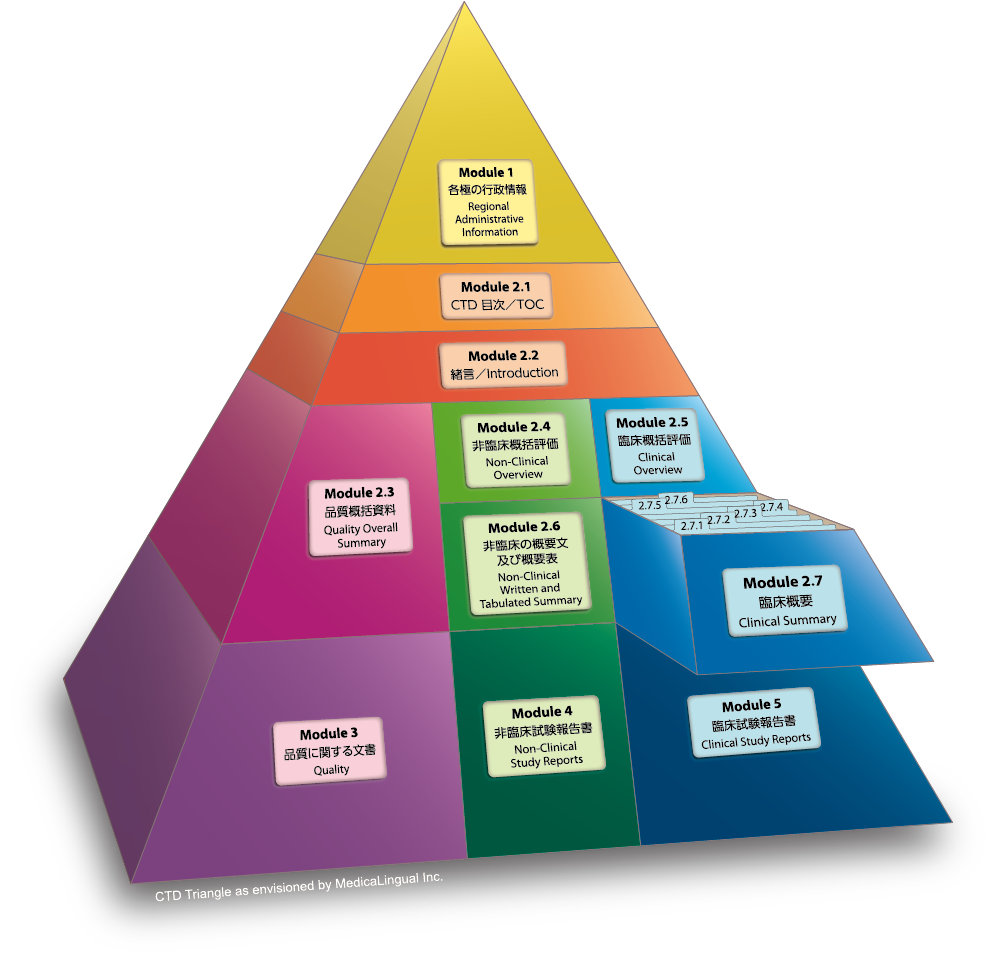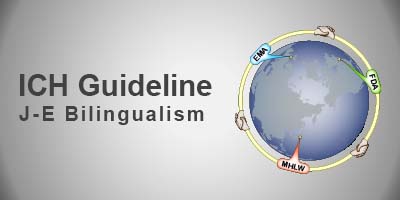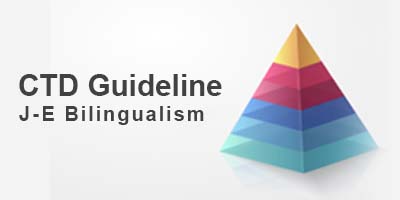
薬生薬審発0202第1号(平成29年2月2日)
ICH HARMONISED GUIDELINE- M4E(R2) – Dated 15 June 2016
Module 2.7 臨床概要
2.7.4 臨床的安全性の概要
2.7.4.2 有害事象
2.7.4.2.1 有害事象の解析
本項には、有害事象の頻度に関するデータを文章及び表形式にて記載すること。文章によるまとめは第2.7.4.2.1項中の適切なサブセクションに示し、文中に含めない独立した表は第2.7.4項の付録に添付すること。
Module 2.7 CLINICAL SUMMARY
2.7.4 Summary of Clinical Safety
2.7.4.2 Adverse Events
2.7.4.2.1 Analysis of Adverse Events
Data on the frequency of adverse events should be described in text and tables. Text should appear in the appropriate subsections of Section 2.7.4.2.1 and the tables that are not embedded in the text should be placed in the section 2.7.4.7 Appendix.
治療開始後に発現した又は悪化した全ての有害事象(「治療により発現した兆候及び症状」、治療前には見られなかった事象、治療前からあったが治療中に悪化した事象)について作表し、事象の種類とそれぞれでの被験者数、頻度を被験薬、実対照薬、プラセボの別に要約すること。その表に投与量を示してもよいし、変更して、重症度別や(開始後)発現時期別、因果関係別に発現頻度等を示してもよい。
All adverse events occurring or worsening after treatment has begun (“treatment emergent signs and symptoms,” those adverse events not seen at baseline and those that worsened even if present at baseline) should be summarised in tables listing each event, the number of subjects in whom the event occurred and the frequency of occurrence in subjects treated with the drug under investigation, with comparator drugs, and with placebo. Such tables could also present results for each dose and could be modified to show, e.g., adverse event rates by severity, by time from onset of therapy, or by assessment of causality.
もし、記載しようとする安全性データがごく少数の治験に基づく場合(例:一つか二つの試験のみ)や被験者群の特徴が非常に異なっている場合には、データを試験別にまとめるほうが適切であることが多い。データが少数試験によらない場合には、いくつかの試験を合わせ、データを併合し、推定値の精度や差に対する感度を増すよう考慮してみること。
When most of the relevant safety data are derived from a small number of studies (e.g., one or two studies), or when very different study subject populations were enrolled in the studies that were performed, presentation of data by study will often be appropriate. When the relevant exposure data is not concentrated in a small number of studies, however, grouping the studies and pooling the results to improve precision of estimates and sensitivity to differences should generally be considered.
試験を合わせ、データを併合することは有用であることが多いが、解釈が難しくなったり差異を見えにくくしたりすることもあるので、注意して取り扱うこと。差異が明確である場合には、試験ごとにデータをまとめる方が適切である。考慮すべき事柄としては次のようなものがある。
- データを併合するのが適切と考えられるのは、投与量、投与期間、有害事象の評価方法及び患者集団等の試験デザインが類似している場合である。
- ある特定の有害事象の発現率が併合する個々の試験においてかなり違う場合、併合解析から得られる推定値の意義はあまりない。
- 他の試験と比較し、有害事象のパターンが違っている試験は別途まとめること。
- 解析の程度は、見られた有害事象の重篤性と因果関係の根拠の強さによる。因果関係のある有害事象の発現率、重篤な有害事象の発現率、又は投与中止あるいは用法・用量の変更をもたらした事象の発現率に明らかな違いがあれば詳細に検討を必要とするが、その他の有害事象について詳細に解析する意味はない。
- どのような被験者が臨床検査の極端な異常値(「アウトライアー」)を経験するか検討することは、特定の有害事象に対するハイリスク集団を明らかにするのに有用であろう。
While often useful, pooling of safety data across studies should be approached with caution because in some cases interpretation can be difficult, and it can obscure real differences. In cases where differences are apparent, it is more appropriate to present the data by study. The following issues should be considered:
- it is most appropriate to combine data from studies that are of similar design, e.g., similar in dose, duration, methods of determining adverse events, and population.
- if the incidence for a particular adverse event differs substantially across the individual studies in a pool, the pooled estimate is less informative.
- any study with an unusual adverse event pattern should be presented separately.
- the appropriate extent of analysis depends on the seriousness of the adverse event and the strength of evidence of drug causation. Differences in rates of drugrelated, serious events or events leading to discontinuation or dosage change deserve more investigation, whereas rates of other adverse events do not merit elaborate analysis.
- examination of which subjects experience extreme laboratory value abnormalities (“outliers”) may be useful in identifying subgroups of individuals who are at particular risk for certain adverse events.
次のような試験は併合し、安全性解析を行ってよい。
- 全ての比較対照試験又は比較対照試験の部分集団。例えば、全てのプラセボ対照試験、何らかの実薬対照を用いた試験、特定の実薬対照を用いた試験、特定の適応症について検討した試験(異なる患者集団にて実施された試験)がその対象になる。これらのグループ化は、比較的よく見られる有害事象についての最も重要な情報源であると考えられ、これにより、自然発生的な事象と治験薬と関連のある事象とを区別することができる。有害事象の発現率については対照薬群と被験薬群との間で比較すること。
- 健康被験者を対象とした短期試験を除いた全ての試験。比較的稀な事象を評価するには、このグループ化が最も適している。
- 特定の投与経路、投与方法、特定の併用療法を用いた全ての試験。
- チェックリストや直接質問に基づき有害事象を調査した試験、又は自発報告に基づく試験。
- 試験を実施した地域ごとに併合した結果。
Groups of studies that could be used in pooled safety analyses include:
- all controlled studies or subsets of controlled studies, such as all placebocontrolled studies, studies with any positive control, studies with a particular positive control, or studies of particular indications (and thus carried out in different populations). These groupings are considered the best source of information about the more common adverse events and can distinguish drugrelated events from spontaneous events. Rates in control and treatment groups should be compared.
- all studies, excluding short-term studies in healthy subjects. This grouping is most useful for evaluating rarer events.
- all studies using a particular dose route or regimen, or a particular concomitant therapy.
- studies in which adverse event reports are elicited by checklist or direct questioning, or studies in which events are volunteered.
- pools of studies by region.
これらのうち、最初の二つのグループ化はほぼ全ての場合に有用である。しかし、他のグループ化の意義は薬剤により異なるので、個々の試験結果を精査した後に決める方がよい。いかなる試験方法であれ、試験それぞれにおける発現率は実際の使用における発現をおおよそ表現したものにすぎないことを認識すること。
It is almost always useful to carry out the first two groupings; the others chosen would vary from drug to drug and should be influenced by inspection of individual study results. Whatever methods are used, it should be recognised that, as for results of single studies, any numerical rate is often only a rough approximation of reality.
いくつかの試験のデータを併合する場合は、その方法を選択した根拠を説明すること。一般的な方法としては、併合した試験での症例数を分母に、有害事象件数を分子にすることである。その他にも、試験の規模に基づいた、あるいはバラツキの大きさに反比例させたデータの重みづけをすることも可能である。
When a decision is made to pool data from several studies, the rationale for selecting the method used for pooling should be described. It is common to combine the numerator events and the denominators for the selected studies. Other methods for pooling results across studies are available, e.g., weighting data from studies on the basis of study size or inversely to their variance.
試験間の有害事象発現率が大きく異なる場合は、その旨を記載し、考えられる理由について考察すること(例:被験者集団、投与方法、有害事象データ収集法)。
If substantial differences are seen between clinical trials in the rates of adverse events, these differences should be noted and possible reasons should be discussed (e.g., relevant differences in study populations, in dose administration, or in methods of collecting adverse event data).
有害事象の記載内容は、個別総括報告書と同じとすること(ICH E3)。多くの試験を併合する場合は、標準的な用語を用いて表現し、類義語は基本語(preferred term)に統一することが重要である。そのためMedDRA用語集(ICH M1)等一つの標準的辞書を用いること。MedDRAが完全実施されるまでは、他の辞書を用いてもよい。その場合、使用した用語集を示すこと。有害事象は、基本語ごとや定義された事象のグループごとに頻度を示すこと。
Adverse events should be described as shown in the individual study report (ICH E3). In combining data from many studies, it is important to use standardised terms to describe events and collect synonymous terms under a single preferred term. This can be done with a standard dictionary, and the MedDRA terminology (ICH M1 guideline) should be used. Until MedDRA can be fully implemented, other dictionaries can be used, but should be specified. Frequencies should be presented for preferred terms and for appropriately defined groupings.
治療変更(投与中止、用量変更、治療の追加)をもたらした有害事象にどのようなものがあったか検討することは、有害事象の臨床的重要性を評価するのに有用である。これらの有害事象の発現率を有害事象一覧表に含めてもよいし、別表としてもよい。試験別にトータルの中止率を示すことは有用である。しかし、別表を用い、投与中止に至った特定の有害事象を明記することも重要である。有害事象は、器官別にグループ化し、頻度の高い順に並べること。
Examination of which adverse events led to change in therapy (discontinuation of drug use, change in dose, need for added therapy) can help in assessing the clinical importance of adverse events. These rates can be added to the adverse event rate tables, or can be presented in separate tables. Overall discontinuation rates by study may be useful but it is also important to specify the particular adverse events leading to discontinuation in a separate table. The preferred terms should be grouped by body system and arranged by decreasing frequency.
2.7.4.2.1.1 比較的よく見られる有害事象
有害事象発現率を表形式でまとめ(第2.7.4項の付録を参照)、被験薬群と対照薬群における発現率を比較すること。もし重症度分類と因果関係分類がなされていれば、表中に併記すると、治療群間の比較検討がし易く便利である。因果関係分類を示していても、データの中には(因果関係の有無にかかわらず)全ての有害事象を含めることに注意すること。なぜなら、因果関係の評価は本質的に主観的なものであり、実際には関係があるにもかかわらず予期されていない有害事象を除外していることがあるからである。さらに、個々の試験における被験薬群と対照薬群との間で有害事象発現率を比較し本項で要約すること。特定の試験を選択し、有害事象発現率を表としてまとめると有用であることが多い(第2.7.4項の付録、表2.7.4.4を参照)。
2.7.4.2.1.1 Common Adverse Events
Tabular displays of adverse event rates (see the section 2.7.4.7 Appendix) should be used to compare rates in treatment and control groups. For this analysis it may be helpful to combine the event severity categories and the causality categories, if they are used, leading to a simpler side-by-side comparison of treatment groups. It should be noted that while causality categories may be reported, if used, the presentation of the data should include total adverse events (whether deemed related or unrelated to treatment); evaluations of causality are inherently subjective and may exclude unexpected adverse events that are in fact treatment related. Additionally, comparisons of rates of adverse events between treatment and control groups in individual trials should be summarised here. It is often useful to tabulate rates in selected trials (see example table 2.7.4.4, in the Section 2.7.4.7 Appendix).
当該医薬品と関連すると思われ、比較的よく見られる有害事象(用量反応性があるもの、被験薬とプラセボとの間で発現率が明らかに異なるもの)を、以下の因子との関連について検討しつつ厳密に評価することは一般的に有用である。
- 投与量
- mg/kg又はmg/m2で示される投与量
- 投与方法
- 投与期間
- 総投与量
- 年齢、性別、人種等の人口統計学的特性
- 併用医薬品
- 腎機能等ベースライン特性
- 有効性の結果
- データがあれば、薬物の濃度
It is usually useful to examine more closely the more common adverse events that seem to be drug related (e.g., those that show that a dose response and/or a clear difference between drug and placebo rates) for relationship to relevant factors, including:
- dosage;
- mg/kg or mg/m2 dose;
- dose regimen;
- duration of treatment;
- total dose;
- demographic characteristics such as age, sex, race;
- concomitant medication use;
- other baseline features such as renal status;
- efficacy outcomes;
- drug concentration, where available.
これら薬剤と関連のある有害事象を、発現時期や持続時間との関連で検討した結果の要約もまた有用と考えられる。
ただし、上記の各因子それぞれと有害事象との関連について、一般的に、厳密な統計的評価を行う必要はない。データをまとめた時点や検討した時点で既に人口統計学的特性、その他のベースライン特性に対し意味ある関連性がないことが明らかな場合もある。そのような場合、特定の因子についてさらに解析を行うことは不要であるし、解析をしてもその結果をこの項に記載する必要はない。また、安全性の解析結果が広範なもので、その詳細を示すことができない場合には、第5部第5.3.5.3項に示し、本項ではその要約を示せばよい。
内容によっては、有害事象の発現率をそのまま記述するよりも、生命表法や類似の解析方法で報告する方が望ましいこともある。
It may also be useful to summarise the results of examination of time of onset and duration for these drug-related events.
Rigorous statistical evaluations of the possible relationship of specific adverse events to each of the above factors are often unnecessary. It may be apparent from initial display and inspection of the data that there is no evidence of a significant relationship to demographic or other baseline features. In that case, no further analysis of these particular factors is needed. Further, it is not necessary that all such analyses be presented in this report. When the safety analyses are too extensive to be presented in detail in this report, they may be presented in a separate report in Module 5, section 5.3.5.3, and summarised here.
Under certain circumstances, life table or similar analyses may be more informative than reporting of crude adverse event rates.
2.7.4.2.1.2 死亡
治験中の死亡例は、すべて第2.7.4項付録中の表に列記すること(試験終了後短期間での死亡、例えば中止後30日以内又は治験プロトコールに規定された期間内の死亡、それ以後の事例ながら試験中の何らかの経過(process)に起因したと考えられる死亡例)。ただし、進行癌等の死亡率の高い集団での試験や疾患に起因する死亡率が主要評価項目となっている試験において、プロトコールに規定された疾患に関連し、治験薬に関連しない死亡例(これらの死亡例は、ICH E3治験総括報告書に報告することとされている)はこの一覧表から除外すること。これらの死亡についても、群間に予想外のパターンがなかったかどうかを検討し、新たな差異が観察された場合には解析を追加すること。死亡例はそれぞれについて評価し、個々の試験及び全体における総死亡率と原因別死亡率について分析すること。第2.7.4.2.1.1項に示した因子との関係も考慮すること。死亡原因を特定することは難しいかもしれないが、比較的解釈しやすいものもある。対象となる患者集団において予想される原因による死亡例(例:狭心症患者集団における心臓発作及び突然死)一つ一つに情報価値はないと考えられるかも知れないが、例え1症例であってもそれがQT時間延長を伴う不整脈、再生不良性貧血、肝障害によるもの等であれば重要情報となる。死亡原因を合併症に関連付けるにあたっては、特別の注意を払うこと。
2.7.4.2.1.2 Deaths
A table in the Section 2.7.4.7 Appendix should list all deaths occurring while on study (including deaths that occurred shortly following treatment termination, e.g., within 30 days or as specified in the study protocol, as well as all other deaths that occurred later but may have resulted from a process that began during studies). Only deaths that are clearly disease-related per protocol definitions and not related to the investigational product, either in studies of conditions with high mortality such as advanced cancer or in studies where mortality from disease is a primary study endpoint, should be excepted from this listing (it is assumed, however, that these deaths would still be reported in the individual ICH E3 study reports). Even these deaths should be examined for any unexpected patterns between study arms, and further analysed if unexplained differences are observed. Deaths should be examined individually and analysed on the basis of rates in individual trials and appropriate pools of trials, considering both total mortality and cause-specific deaths. Potential relationships to the factors listed in Section 2.7.4.2.1.1 should also be considered. Although causespecific mortality can be difficult to determine, some deaths are relatively easy to interpret. Thus deaths due to causes expected in the patient population (heart attacks and sudden death in an angina population) are individually not considered to be informative, but even one death due to a QT interval prolongation-associated arrhythmia, aplastic anaemia, or liver injury may be informative. Special caution is appropriate before an unusual death is attributed to concomitant illness.
2.7.4.2.1.3 その他の重篤な有害事象
本項に、全ての重篤な有害事象(死亡ではないが、時間的に死亡に関連する、又は死亡に先行する重篤な有害事象を含む)を要約すること。また、被験薬を中止した後に発現した重篤な有害事象も含めること。その他、ICH E2A定義により重篤な有害事象と思われた臨床検査値異常、異常なバイタルサイン、異常な身体的観察項目を含めること。重篤な有害事象については経時的頻度を検討すること。特に、長期に亘って使用される可能性のある医薬品については検討を要する。また、第2.7.4.2.1.1項に示した因子との関連性も考察すること。
2.7.4.2.1.3 Other Serious Adverse Events
Summaries of all serious adverse events (other than death but including the serious adverse events temporally associated with or preceding the deaths) should be displayed. Serious adverse events that occurred after the drug use was discontinued should be included in this section. The display should include major laboratory abnormalities, abnormal vital signs, and abnormal physical observations that are considered serious adverse events using the ICH E2A definitions. Results of analyses or assessments of serious adverse events across studies should be presented. Serious events should be examined for frequency over time, particularly for drugs that may be used chronically. Potential relationships to the factors listed in Section 2.7.4.2.1.1 should also be considered.
2.7.4.2.1.4 その他の重要な有害事象
顕著な血液学的異常、又はその他の臨床検査値異常(重篤という定義を満たすものを除く)、及び何らかの処置(治験薬の中止、減量又は重要な併用療法の追加等)を必要とした全ての事象を示すこと。
治験薬の投与中止をもたらす有害事象は重要な安全性上の関心事であり、次の二つの理由から安全性解析には特別の注意を払う必要がある。第一に、(薬理活性に基づき)予期されていたものであれ、中止(又は他剤に変更)する必要性があったということは、患者や医師がその有害事象の重症度と重要性をいかに感じたかを示している。第二に、投薬中止は、まだ因果関係が認識されていない治験薬と関連する有害事象であることを意味する場合がある。中止に至る有害事象は、当初その因果関係が認識されていなくとも、また、偶発症と考えられる場合でも、治験薬との関連性を否定できないと考えること。中止について、その理由を検討し、中止率を試験間並びに治験薬群とプラセボ群、実薬対照群との間で比較すること。さらに、第2.7.4.2.1.1項に示した各因子と関連があるかどうかデータを検討すること。
2.7.4.2.1.4 Other Significant Adverse Events
Marked haematologic and other laboratory abnormalities (other than those meeting the definition of serious) and any events that led to a substantial intervention (premature discontinuation of study drug, dose reduction, or substantial additional concomitant therapy), other than those reported as serious adverse events, should be displayed.
Events that led to premature discontinuation of study drug represent an important safety concern and deserve particular attention in the analysis of drug safety for two reasons. First, even for expected events (based on pharmacologic activity), the need to discontinue (or otherwise alter) treatment reflects the severity and perceived importance of the event to patient and physician. Second, discontinuation may represent a drug-related event not yet recognised as drug related. Adverse events leading to treatment discontinuation should be considered possibly drug-related even if this was not recognised initially and even if the event was thought to represent intercurrent illness. Reasons for premature treatment discontinuations should be discussed and rates of discontinuations should be compared across studies and compared with those for placebo and/or active control treatment. In addition, the study data should be examined for any potential relationships to the factors listed in Section 2.7.4.2.1.1.
2.7.4.2.1.5 器官別又は症候群別有害事象の解析
死亡、その他の重篤な、又は重要な有害事象の因果関係や危険因子についての評価は、それらの事象が高頻度で起こらないため、多くの場合、簡単でない。その結果、相互に関連性のある事象を、例え重要性の低い病態生理学的事象であれ、一つのグループとしてまとめ検討することが、安全性の特徴を理解する上で有用なこともある。例えば、突然死が1例見られた時、治療との因果関係があるかどうかは、失神、動悸や無症候性不整脈の発現状況と共に考察することにより明らかになることもある。
このように、有害事象を器官別にまとめれば、臨床検査値異常を含め諸事象との関連性を検討することもできる。器官別のまとめは、第2.7.4.2.1.5項中の第2.7.4.2.1.5.1項、第2.7.4.2.1.5.2項等のサブセクションとして記載し、表題には当該器官名を付すこと。器官のまとめ方や有害事象のグループ化は、有害事象データが理解しやすいよう配慮すること。有害事象が症候群(例:インフルエンザ様症候群、サイトカイン放出症候群)として現れる場合には、器官別ではなく、症候群別用に第2.7.4.2.1.5項のサブセクションをおこしてもよい。
同じデータや要約は、第2.7.4.2.1項のサブセクションに一度記載すればよく、繰り返さないこと。必要があれば相互参照すること。
2.7.4.2.1.5 Analysis of Adverse Events by Organ System or Syndrome
Assessment of the causality of, and risk factors for, deaths, other serious events, and other significant events is often complicated by the fact that they are uncommon. As a result, consideration of related events as a group, including less important events of potentially related pathophysiology, may be of critical value in understanding the safety profile. For example, the relationship to treatment of an isolated sudden death may become much clearer when considered in the context of cases of syncope, palpitations, and asymptomatic arrhythmias.
It is thus generally useful to summarise adverse events by organ system so that they may be considered in the context of potentially related events including laboratory abnormalities. Such presentations of adverse events by organ system should be placed in subsections of section 2.7.4.2.1.5, labelled as 2.7.4.2.1.5.1, 2.7.4.2.1.5.2, etc., and titled by the organ system under consideration. The list of organ systems to be addressed and the approach to grouping certain events should be selected as appropriate to best present the adverse event data for the medicinal product. If some adverse events tend to occur in syndromes (e.g., influenza-like syndrome, cytokine release syndrome), the sponsor may choose to create some subsections of 2.7.4.2.1.5 for syndromes rather than organ systems.
The same data and summarisations should generally not be repeated in more than one subsection of Section 2.7.4.2.1. Instead, a summary presentation may be placed in one subsection and cross-referenced as needed in the other.
2.7.4.2.2 個別有害事象の文章による説明
死亡、その他の重篤な有害事象、他の重要な有害事象は、臨床的に重要な関心事であるため(ICH E3、治験総括報告書に記載)、事例それぞれの記述が申請資料中のどこにあるかを、審査担当者の利便のため、本項にて示すこと。治験総括報告書が作成されている場合、事例報告そのものは、その一部として存在するはずである。もしも作成されていない場合(例:安全性解析のために全てのオープン試験を併合しており、個々の報告書が作成されていない)、記述は第5部第5.3.5.3項に示してもよい。したがって、ごく簡単にでも説明しておかなくては当該医薬品の評価に支障があると考えられない限り、本項には含めないこと。
2.7.4.2.2 Narratives
The locations in the application of individual narratives of patient deaths, other serious adverse events, and other significant adverse events deemed to be of special interest because of clinical importance (as described in ICH E3 individual study reports) should be referenced here for the convenience of the reviewer. The narratives themselves should be a part of the individual study reports, if there is such a report. In cases where there is no individual study report (e.g., if many open studies are pooled as part of a safety analysis and are not individually described), narratives can be placed in Module 5, Section 5.3.5.3. Narratives should not be included here, unless an abbreviated narrative of particular events is considered critical to the summary assessment of the drug.










